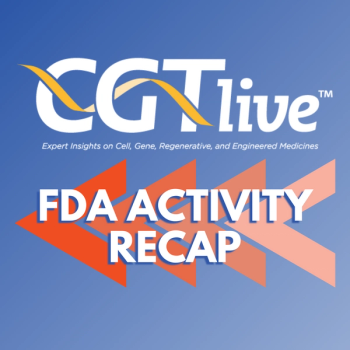
Ribozymes Are Centerpiece of Gene Therapy for HIV Disease
MONTREAL, Canada--The centerpiece of efforts to develop gene therapy to treat human immunodeficiency virus (HIV) disease at the University of California, San Diego, has been the use of ribozymes, Flossie Wong-Staal, PhD, said at the 19th International Congress of Chemotherapy.
MONTREAL, Canada--The centerpiece of efforts to develop gene therapyto treat human immunodeficiency virus (HIV) disease at the Universityof California, San Diego, has been the use of ribozymes, FlossieWong-Staal, PhD, said at the 19th International Congress of Chemotherapy.
Dr. Wong-Staal's group at San Diego has developed a "hairpinribozyme," which, based on preclinical studies, is aboutto be tested to evaluate its safety and feasibility for use asgene therapy in HIV-infected persons, she reported.
Initially, Dr. Wong-Staal explained, ribozymes were selected becausethey have several major advantages. Ribozymes are small RNA moleculeshaving the dual properties of an antisense molecule, because theyrecognize the substrate through sequence complementarity and alsohave the ability to cleave substrate RNA and permanently inactivateit.
Furthermore, because ribozymes are small molecules, it is possibleto make combinations of these genes and deliver them in a singledelivery system, a factor essential to an effective antiviralstrategy.
The hairpin ribozyme, itself, Dr. Wong-Staal continued, has beenshown to cleave HIV-1 RNA, suppressing the replication of diversestrains of HIV-1, including clinical isolates.
Furthermore, studies in human T-cell lines and primary T cellsfrom normal donors demonstrated that the hairpin ribozyme canbe transduced with the primary lymphocytes, making them resistantto both the infective and cytopathic effects of HIV-1 strains.This resulted in a 4 log reduction in virus titer, Dr. Wong-Staalsaid.
Based on these results a clinical study protocol has been developedand is awaiting approval from the FDA and other regulatory agencies,she said.
Preclinical Studies Pursued
While waiting for approval of the clinical trial, investigatorsare pursuing several lines of preclinical research to furtherthe development of eventual gene therapy against HIV, Dr. Wong-Staalsaid.
To limit the chance of viral resistance and to increase antiviralpotency, a combinational vector expressing two ribo-zymes or afusion RRE ribozyme gene was developed. [RRE--Rev response element--isan RNA decoy for Rev, a critical HIV protein.]
Using a protocol similar to that used with normal donor T lymphocytes,T cells from infected patients were transduced, and after 2 weeksin culture, the ribozyme-transduced cells showed a greater survivalof CD4 cells.
Also, viral expression, while not completely suppressed, was delayedfor 2 or 3 weeks, showing that the ribozyme works against thepatient's own virus and can confer a selective advantage in theCD4 cells.
Based on these results, Dr. Wong-Staal asserted, the protocolwas modified. Most of the T cells in the patients were CD8, notCD4, and the idea was to remove these CD8 T cells for better transductionand expansion of the CD4 cells, as well as to deal with the virusamplification issue.
A step of CD8 T-cell depletion was added, along with the additionof two antiviral agents specific for HIV-1, during the transductionand expansion steps.
In the presence of the two antivirals, virus replication couldbe completely suppressed, Dr. Wong-Staal stated. When the drugswere removed after 3 or 4 weeks, no virus came up, suggestingthat the infective cell population was eliminated. When the concentrationof one of the antivirals, nevirapine, was reduced, the controlvector-transduced cells expressed considerable virus, but theribozyme-transduced cells still held.
These results are particularly encouraging, as they show thata therapeutic gene can work in concert with an antiviral agent,she said.
Umbilical Cord Blood Study
Unfortunately, Dr. Wong-Staal noted, since the mouse retroviralvectors do not transduce nondividing cells, the macrophage reservoirof HIV infection was not modified. It is necessary, therefore,to also target progenitor cells for sustained reconstitution.
The researchers found that CD34+ cells derived from umbilicalcord blood cells could be transduced with the ribo-zyme gene,and GM-CSF was used to in-duce these cells to differentiate alongmye-loid lineage.
In 2 weeks, there was a fairly pure population of terminally differentiatedmacrophages that were susceptible to HIV-1 challenge by monocyte-tropicHIV-1. The macrophage progeny derived from the transduced CD34+cells proved to be resistant to HIV challenge.
A second clinical protocol has now been developed to look at autologousre-infusion of genetically altered cord blood CD34+ cells fromHIV-1 infected infants, and the study should be initiated in thevery near future.
Newsletter
Stay at the forefront of cutting-edge science with CGT—your direct line to expert insights, breakthrough data, and real-time coverage of the latest advancements in cell and gene therapy.































